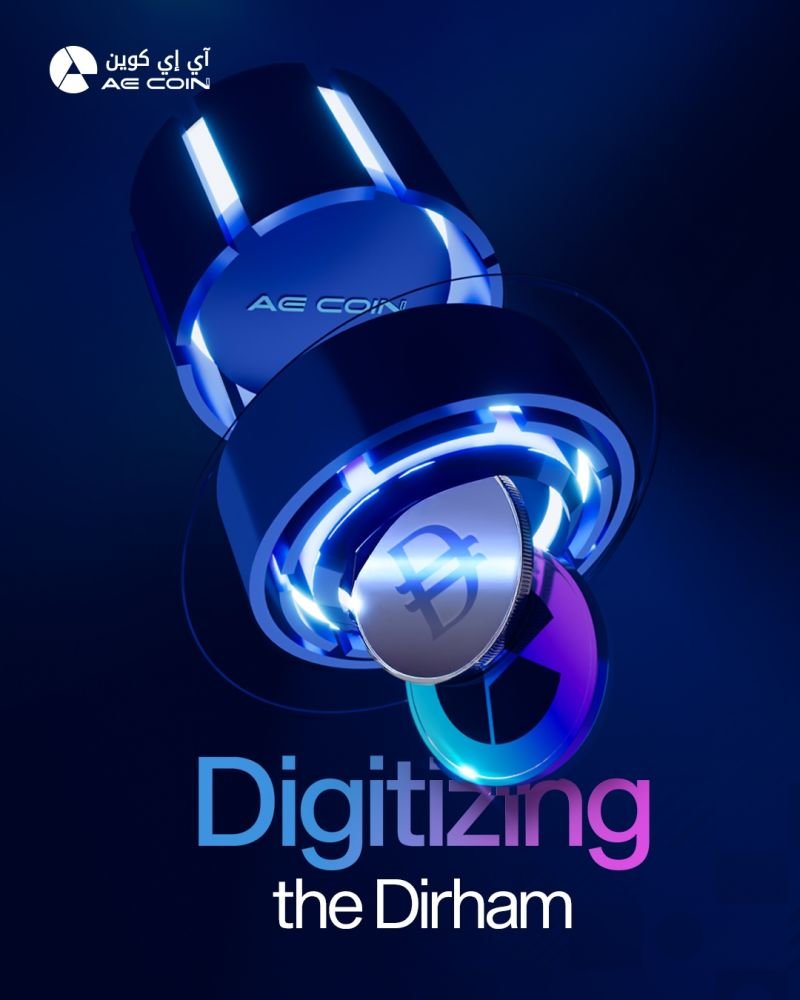-
Digital Dirham’s encrypted blockchain ensures 100% transaction traceability, setting UAE apart in financial security.
-
UAE’s holographic compliance tools merge legal frameworks with AI-driven blockchain innovation for real-time oversight.
-
Dubai’s fusion of tradition and tech creates a blueprint for Africa’s regulated blockchain ecosystems.
The United Arab Emirates continues to showcase why it’s among the top adopters of blockchain technology with its ambitious plans for the UAE CBDC, Digital Dirham and UAE stablecoin, AE Coin.
These initiatives revolutionize the region’s financial ecosystem, providing enhanced security, efficiency and accessibility in digital payments.
As the world and Africa gear up to embrace digital currency, the UAE is set on dominating the ecosystem, making it Web3’s number one adopter.
Digital Dirham: A New Era in UAE Digital Currency
In the final quarter of 2025, the Central Bank of the United Arab Emirates(CBUAE) intends to launch the nation’s first CBDC, the digital Dirham.
This new digital asset complements physical cash and electronic payment systems, functioning as a legal tender across retail, wholesale, and cross-border channels.
The Federal Decree-Law No. (54) of 2023 will enable this feat. Ensuring universal acceptance by licensed banks, exchange houses and fintech companies.
Key Features of the Digital Dirham
The Digital Dirham boast several innovative features, setting it apart from traditional payment methods.
The incorporation of tokenizations enables fractional ownership of assets, expanding access to the financial market, and increasing its liquidity for a broader range of participants.
It’s smart contract automates complex multistep transactions, improving operational efficiency while reducing potential errors.
CHECK OUT: Ripple in the Desert, How DFSA License Fuels UAE Crypto Boom
Finally, its highest selling point is enhanced security via blockchain encryption, which prevents fraud and illicit use, making transactions more secure and, most importantly, traceable.
Via an encrypted ledger, combat financial crime by creating a transparent and traceable record of transactions, streamlining investigation and implementing anti-crime measures.
UAE Digital Currency: A Global Perspective
The UAE Central Bank Digital Currency Launch is part of a broader shift toward financial inclusion.
The digital asset distribution through licensed entities widens access for unbanked populations, a cornerstone of the CBUAE’s Financial Infrastructure Transformation programme.
Furthermore, CBDC adoption in emerging markets provides various perspectives, each giving this technology its good and bad sides.
Currently, only a few countries have introduced CBDC.
Notable examples include China’s Digital Yuan (e-CNY), India’s Digital Rupee (e₹), Russia’s Digital Ruble, Nigeria’s eNaira, the Bahamas’ Sand Dollar, and Jamaica’s JAM-DEX.
From the governmental aspect, it often emphasizes consumer use, which includes sales and better cross-border channels for business and investors.
Despite its positive aspects, CBDCS, digital versions of a country’s sovereign currency, are often frowned upon.
Its complete control over the digital assets shunned many traders and even investors from associating with it.
A prime example is Nigeria’s eNaira, which, for the most part, is considered a failure. All CBDC transactions are recorded and monitored by regulatory bodies, making many fear its ramifications if governments turn their backs.
Dirham-backed stablecoin: Private Innovation with Public Oversight
Fortunately, the UAE planned after the sour reputation of CBDCS. In April 2025, International Holding Company (IHC), the Abu Dhabi Sovereign Wealth Fund(ADQ), and First Abu Dhabi Bank announced the AE Coin launch, the UAE’s first fully regulated dirham-backed stablecoin.
Unlike its counterpart, the Digital Dirham, the AE coin is issued by private entities and is pegged 1:1 to the nation’s fiat currency held in reserve.
This generally means every AE coin will be equivalent to a dirham.

Digital Dirham’s encrypted blockchain ensures 100% transaction traceability, setting UAE apart in financial security. [Photo: LinkedIn]
The dirham-backed stabelcoin will operate on the ADI blockchain, which the ADI foundation developed. In addition, the AE coin provides a distributed network for blockchain payments connecting traditional financial systems with Web3 technology.
These features will support global financial access, further showcasing how the UAE is leading in digital payments.
As of the time of writing, the ADI Foundation’s network incorporates over 20 governments, showcasing the sophistication of its blockchain infrastructure.
This provides ample use cases for the AE Coin.
Digital Dirham vs. AE Coin: Understanding the Differences
While the Digital Dirham and AE Coin are digital representations of the Dirham, their origins differ.
The state issues the UAE CBDC and holds legal tender status, while the dirham-backed stabelcoin is a private initiative under regulatory oversight, not legal tender.
This essentially means the UAE government and regulatory bodies have complete and utter control of the CBDC while only having limited/montiory capabilities the stablecoin.
The Digital Dirham ensures regulatory compliance and stability, while AE Coin fosters innovation in decentralized finance.
This dual approach is a monumental chess move, giving users alternatives. Based on prior feedback from other CBDCS, users often avoid interacting with it, making the AE coin a much better one.
A Blueprint for the Future of Finance
The Digital Dirham and the AE coin represents how UAE is leading in digital payments. Each promises enhanced payment systems, fosters financial inclusion and creates a blueprint for navigating the ever-evolving blockchain industry.
As the UAE Central Bank’s Digital Currency launch nears, the world will watch closely how this dual strategy reshapes global payment paradigms.
Whether it inspires nations or provides a not-to-do list, it demonstrates how digital financial solutions are the future for economies.

